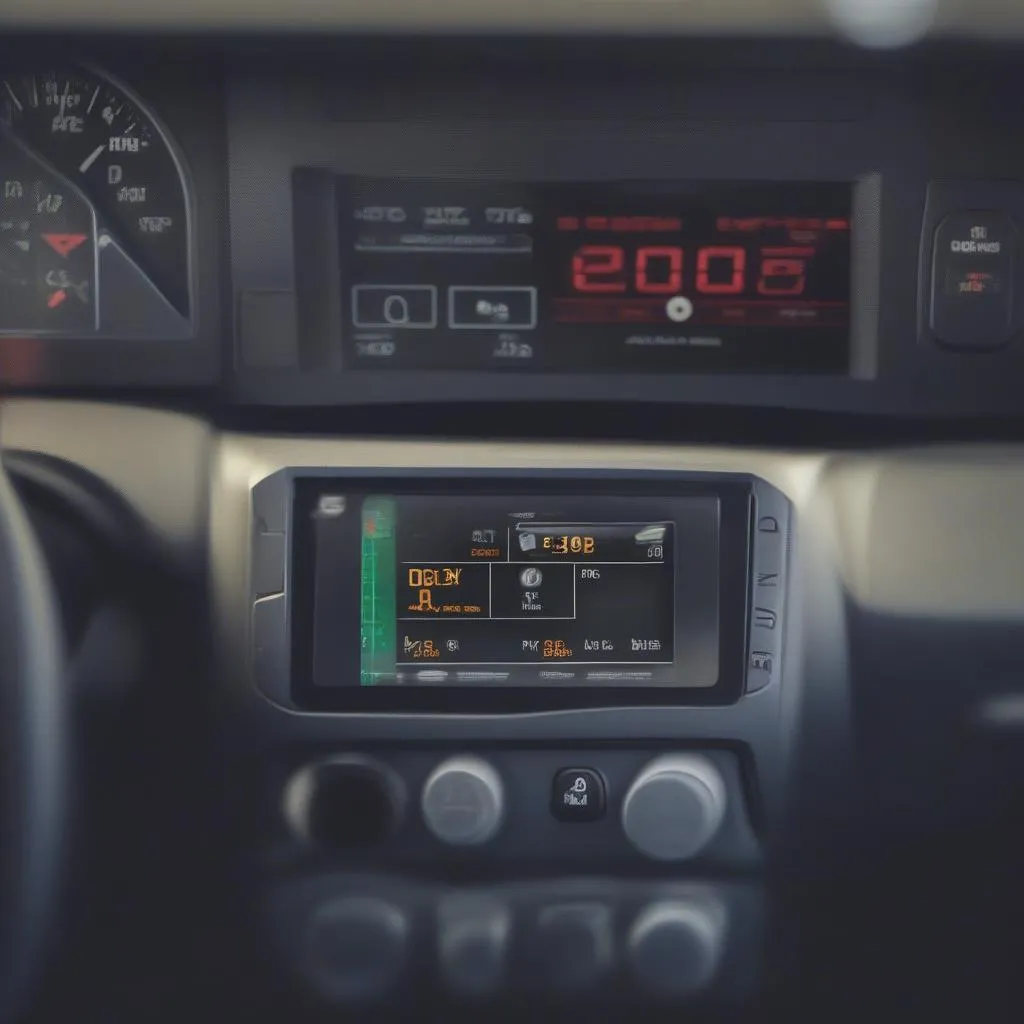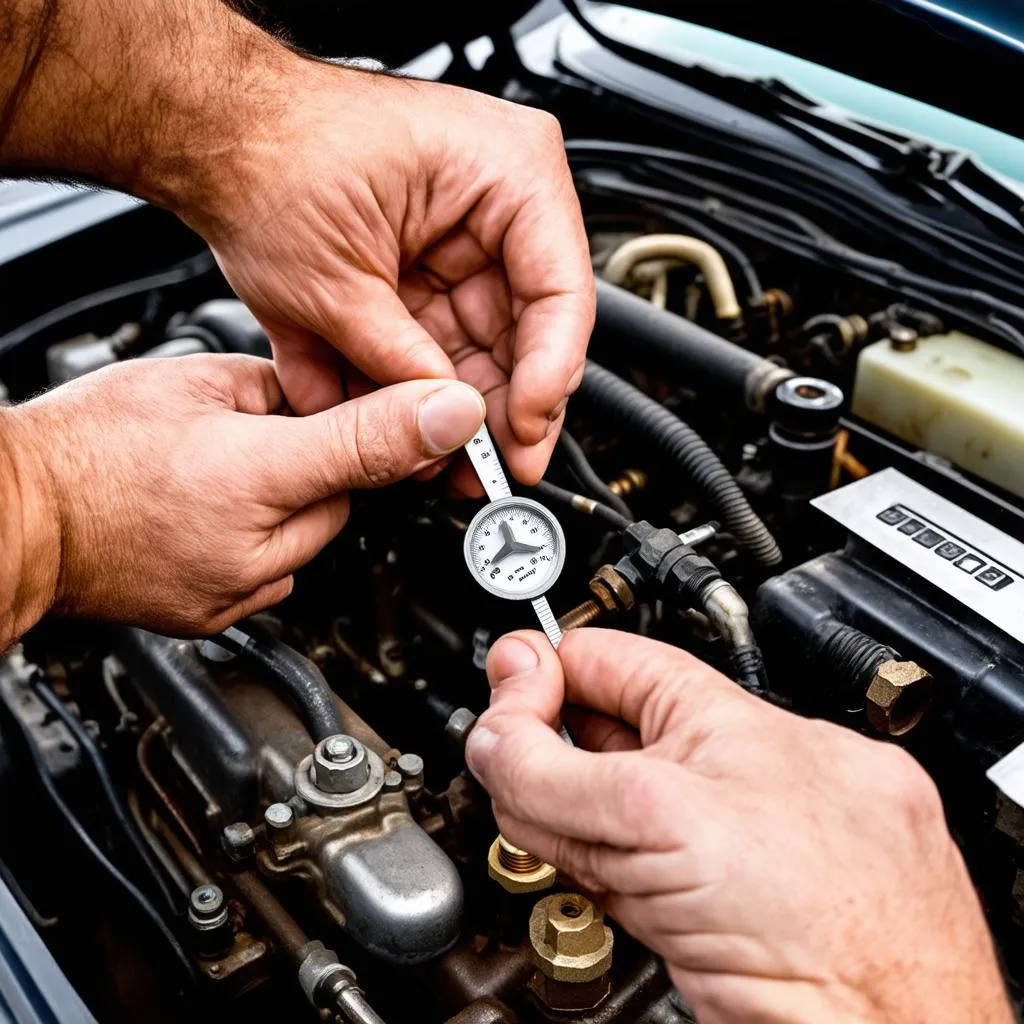Experiencing a sudden loss of power in your Mercedes GLA 250 can be a frustrating and concerning experience. The “no power” issue can manifest in various ways, from sluggish acceleration to a complete engine stall. While pinpointing the exact cause can be tricky, this comprehensive guide aims to equip you with the knowledge to diagnose and potentially fix the “no power” problem in your Mercedes GLA 250.
Understanding the Possible Culprits
Before diving into solutions, it’s crucial to understand the potential reasons behind your Mercedes GLA 250’s power loss. A multitude of factors can contribute to this issue, ranging from simple fixes to more complex mechanical failures.
Common Causes of “No Power” in Mercedes GLA 250:
- Fuel System Issues: A clogged fuel filter, malfunctioning fuel pump, or faulty fuel injectors can disrupt the fuel supply to the engine, leading to power loss.
- Air Intake Problems: A restricted airflow due to a blocked air filter or a leak in the intake system can suffocate the engine, resulting in reduced power.
- Sensor Malfunctions: Sensors like the Mass Air Flow (MAF) sensor, Throttle Position Sensor (TPS), or Oxygen Sensor (O2) provide crucial data to the engine control unit (ECU). A faulty sensor can send inaccurate information, leading to poor engine performance and power loss.
- Spark Plug and Ignition System Issues: Worn-out spark plugs or a failing ignition coil can prevent the engine from igniting the fuel-air mixture properly, causing power loss.
- Turbocharger Problems: For turbocharged engines, a failing turbocharger or issues with its related components can significantly impact engine power.
- Transmission Problems: While less common, a slipping or malfunctioning transmission can also lead to a feeling of power loss.
Identifying the Problem: Symptoms and Diagnosis
Recognizing the specific symptoms your Mercedes GLA 250 exhibits can be instrumental in narrowing down the potential causes of the “no power” issue.
- Do you experience sluggish acceleration? This might indicate a problem with the fuel system, air intake, or a sensor malfunction.
- Does the engine stall or hesitate? This could point to issues with the ignition system, fuel delivery, or a failing sensor.
- Is there a noticeable decrease in fuel efficiency? This might suggest a problem with the fuel system, oxygen sensor, or a leak in the air intake system.
- Do you hear any unusual noises from the engine? Unusual noises could indicate problems with the turbocharger, belts, or other engine components.
“Using a professional-grade diagnostic tool can provide valuable insights into the issue,” says automotive expert John Miller, author of “Modern Automotive Diagnostics and Repair.” “These tools can read error codes stored in the car’s computer, pinpointing the source of the problem.”
Consider using a reliable OBDII scanner like those offered by CARDIAGTECH to read and interpret any fault codes stored in your vehicle’s ECU. These codes can provide valuable clues about the underlying cause of the power loss.
Gearing Up for the Fix: Essential Tools and Precautions
Before attempting any repairs, ensure you have the necessary tools and take appropriate safety precautions.
Essential Tools:
- OBDII Scanner
- Basic Mechanic Toolset (Wrenches, Sockets, Screwdrivers)
- Multimeter
- Safety Glasses
- Gloves
Safety Precautions:
- Always disconnect the battery’s negative terminal before working on any electrical components.
- Work in a well-ventilated area.
- Never work on a hot engine; allow it to cool down completely.
- Consult your vehicle’s repair manual for specific instructions and torque specifications.
Addressing the Issue: Potential Fixes and Solutions
While some fixes might require professional assistance, several potential solutions can be undertaken by DIY enthusiasts with basic mechanical skills.
1. Fuel System Checks:
- Inspect the air filter: A clogged air filter restricts airflow, leading to power loss. Replace if necessary.
- Check for fuel leaks: Inspect the fuel lines and connections for any leaks.
- Inspect the fuel pump and filter: A failing fuel pump or clogged fuel filter can hinder fuel delivery. Consider replacing them if necessary.
2. Sensor Inspection and Replacement:
- Clean the Mass Air Flow (MAF) sensor: A dirty MAF sensor can disrupt airflow measurements. Carefully clean it using a MAF sensor cleaner.
- Inspect and replace faulty sensors: If a sensor is identified as faulty using an OBDII scanner, replace it with a new one.
3. Ignition System Check:
- Inspect the spark plugs: Worn-out spark plugs can lead to misfires and power loss. Replace them if necessary.
- Check the ignition coils: Failing ignition coils can prevent spark delivery to the spark plugs. Test and replace if needed.
 Mercedes GLA 250 Engine
Mercedes GLA 250 Engine
Frequently Asked Questions:
Q: Can a bad battery cause “no power” in my Mercedes GLA 250?
A: While a weak battery might cause starting issues, it’s unlikely to cause a sudden “no power” situation while driving. However, a failing alternator, which charges the battery, can lead to similar symptoms.
Q: My check engine light is on. Could that be related to the power loss?
A: Yes, the check engine light can illuminate due to various reasons, including those that can cause power loss. Using an OBDII scanner to read the error codes can help pinpoint the exact problem.
Q: How often should I replace my fuel filter?
A: It’s generally recommended to replace the fuel filter every 30,000 miles or as specified in your Mercedes GLA 250’s owner’s manual.
 OBD2 Scanner Connected to Car
OBD2 Scanner Connected to Car
Conclusion
A sudden loss of power in your Mercedes GLA 250 can be a daunting experience. However, by understanding the potential causes, recognizing the symptoms, and following the troubleshooting steps outlined in this guide, you can take the right steps towards resolving the issue. Remember, while some fixes might be within the realm of DIY, it’s always recommended to consult a qualified mechanic for complex problems or if you’re unsure about any procedure. Safety and accurate diagnosis are paramount when dealing with your vehicle’s engine and electrical systems.


